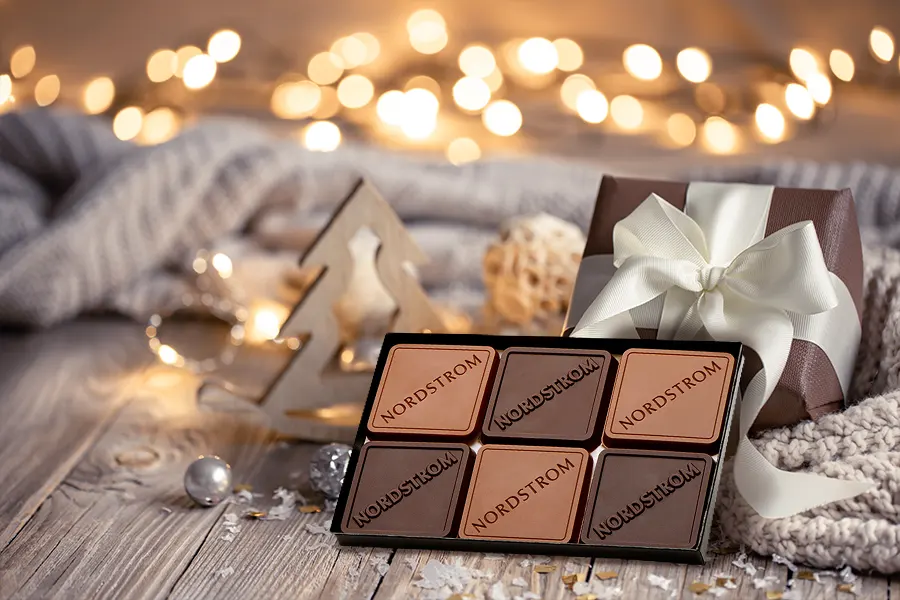Did you know that the average person consumes around two pounds of chocolate a year? What’s more is that because there’s so much variety and delicious choices in terms of chocolate offerings, this is expected to lead to an increase in chocolate consumption going forward.
But there’s always been a debate between chocolate lovers around the world. Some prefer dark and others prefer milk chocolate. While there are distinct differences in flavors, many have wondered what’s the difference between milk chocolate and dark chocolate anyway? Aren’t they just chocolate that tastes different? The short answer is “no”.
And the reason for this varies from their ingredients to textures and even health benefits. If you’ve always been curious about the differences between milk vs dark chocolate, then this post is for you!
Distinctive ingredients
Concentration of cacao
While they both carry the name “chocolate”, dark and milk chocolate contain different ingredients. Even though both contain cacao (derived from the cocoa bean), the concentration of this fundamental ingredient is different in each type.
Whereas dark chocolate contains a higher concentration of cacao (anywhere between 55% and 90%), milk chocolate contains a lower concentration that can range from 10% and 50%.
Of course, every chocolate maker will use different concentrations to create their own unique and complex flavors. However, this is the generally accepted standard across the board.
Milk, fat, and sugar
The other ingredients that typically go into making chocolate are milk, fats, and sugars. So, how are these applied to dark and milk chocolate? Let’s take a look starting with milk.
From the outset, it must be mentioned that dark chocolate typically does not contain any milk, as opposed to its sister chocolate, the milk chocolate, which does (at least 12% milk solids, to be exact).
But that’s not to say that dark chocolate is fat-free. Why? Because it still contains cocoa butter, or the fat that is derived from the cocoa bean.
With regard to sugar, even though dark chocolate contains less than milk chocolate, it still can contain traces of sugar at the very least.
Flavor profile
The two chocolate types also have quite distinct differences in flavor. Whereas dark chocolate is more bitter, milk chocolate is sweeter, creamier, and smoother.
However, dark chocolate also offers more complexity in flavors and these can include hints of nuts, fruits, floral flavors, citrus, and even tannin notes.
Texture
Apart from the flavors, there are also important differences in textures. As can be expected, milk chocolate is usually much smoother on the tongue than dark chocolate. The reason for this? Additional ingredients such as milk or oil. As such, milk chocolate can often be described as rich, smooth, soft, and creamy.
Dark chocolate, on the other hand, is less creamy and melty. However, it is not as “rough” or “dry” as some may be led to believe. With the addition of coconut oil and extra cocoa butter, dark chocolate can be transformed and have a velvety smooth consistency.
Complementary flavors
Because both chocolate types have quite distinct flavors and textures, they are often paired with different foods and drinks to bring out an enhanced taste experience.
Dark chocolate, for example, is often paired with a glass of sweet wine. Other ways to draw out its rich flavors include combining it with salty snacks such as nuts and those which contain sea salt.
As for milk chocolate, you’ll often see it paired with fruits, nuts, sea salt, caramel, coffee, salted almonds, crisped rice, hazelnut butter, and toffee. On the more unusual side, some people enjoy it with bacon and pickles.
Health perks
Of course, both varieties of chocolates can have health benefits, depending of course, on the moderation of consumption and the type of chocolate consumed.
Let’s start with dark chocolate. As mentioned above, it contains a higher percentage of cocoa, which in turn, contains flavanols. These, when used in moderation, can be good for a person’s health as they help support heart health, reduce inflammation, and can even boost cognitive functions.
With this, it’s important to also note that dark chocolate tends to contain more fats and calories than milk chocolate. However, on the whole, it does contain more nutrients, minerals, and fiber. As such, it’s the healthier option.
As for milk chocolate, because it contains a lower concentration of cacao, the health benefits are consequently lower. In addition to this, it also contains more milk, fats, and sugars and these should be consumed in moderation to help prevent health problems in the future.
The final verdict
Just like everyone has their preferred drink, such as their favorite type of wine, so too do different people prefer dark chocolate and milk chocolate. There is no right or wrong answer when it comes to which one is better. It all depends on your taste buds’ preferences.
And if you need a helping hand in deciding what type of chocolate to get for someone as a gift, you’ve come to the right place! At Totally Chocolate, we offer a wide range of options in terms of packaging, presentation, and flavors. The sheer variety will blow you away and you’re bound to find the perfect chocolate gift for any occasion.
